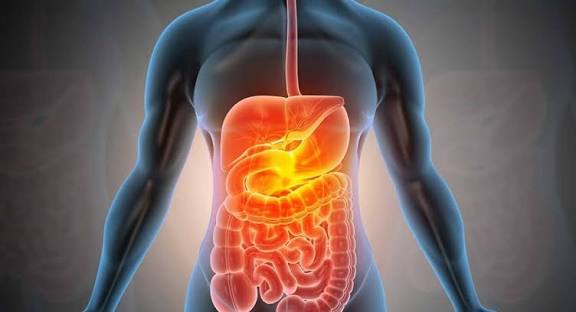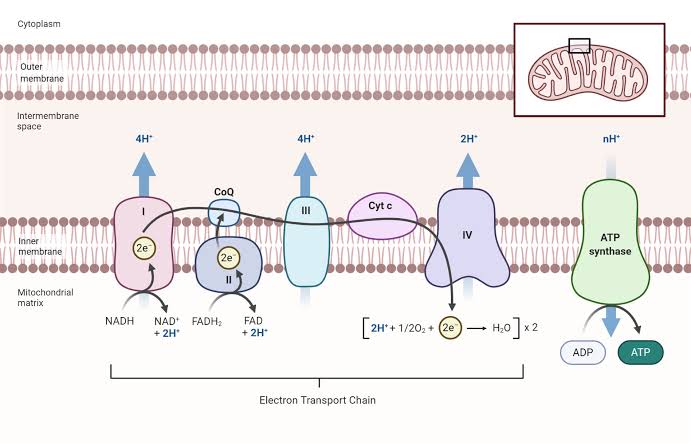
Specificity of Carbohydrate, Lipid, Amino Acid, and Nitrogen Metabolism in the Liver
The liver plays a central role in the metabolism of carbohydrates, lipids, amino acids, and nitrogen. Each of these metabolic pathways is highly specific and regulated to maintain homeostasis within the body. Below is a detailed examination of each metabolic process.
Carbohydrate Metabolism
Carbohydrate metabolism in the liver primarily involves the regulation of glucose levels in the blood. The liver performs several key functions:
- Glycogenesis: This is the process by which glucose molecules are converted into glycogen for storage. When blood glucose levels are high (such as after a meal), insulin stimulates glycogenesis.
- Glycogenolysis: In contrast, when blood glucose levels drop (such as during fasting), glycogen can be broken down into glucose through glycogenolysis. This process is stimulated by glucagon and epinephrine.
- Gluconeogenesis: The liver can also synthesize glucose from non-carbohydrate sources like amino acids and glycerol through gluconeogenesis. This process is crucial during prolonged fasting or intense exercise when glycogen stores are depleted.
- Pentose Phosphate Pathway (PPP): This pathway generates NADPH and ribose-5-phosphate for nucleotide synthesis and fatty acid synthesis, respectively. It operates parallel to glycolysis and is essential for anabolic reactions.
Overall, carbohydrate metabolism in the liver ensures that glucose is available to meet the body’s energy demands while maintaining stable blood sugar levels.
Lipid Metabolism
Lipid metabolism in the liver encompasses several processes essential for energy production and storage:
- Fatty Acid Synthesis: When there is an excess of carbohydrates or proteins, the liver converts these substrates into fatty acids through de novo lipogenesis. Insulin promotes this process.
- Beta-Oxidation: Fatty acids can be broken down into acetyl-CoA units via beta-oxidation to produce ATP when energy is needed. This occurs primarily in mitochondria and peroxisomes.
- Lipoprotein Formation: The liver synthesizes lipoproteins such as very-low-density lipoproteins (VLDL) to transport triglycerides and cholesterol throughout the body.
- Cholesterol Metabolism: The liver regulates cholesterol levels by synthesizing it from acetyl-CoA or taking it up from dietary sources via chylomicrons. It also converts excess cholesterol into bile acids for excretion.
These processes highlight how lipid metabolism in the liver contributes to energy balance, storage, and transport of fats within the body.
Amino Acid Metabolism
The liver plays a critical role in amino acid metabolism through various pathways:
- Transamination and Deamination: Amino acids can undergo transamination (the transfer of an amino group) to form new amino acids or deamination (removal of an amino group) to produce ammonia and keto acids that can enter metabolic pathways like gluconeogenesis or citric acid cycle.
- Urea Cycle: Ammonia produced from deamination is toxic; thus, it enters the urea cycle in hepatocytes where it is converted into urea for safe excretion via urine.
- Protein Synthesis: The liver synthesizes various plasma proteins including albumin, clotting factors, and enzymes necessary for digestion and metabolism.
- Amino Acid Catabolism: Excess amino acids can be catabolized for energy production or converted into other compounds such as glucose or fatty acids depending on metabolic needs.
This specificity allows the liver to manage protein intake effectively while preventing toxic accumulation of ammonia.
Nitrogen Metabolism
Nitrogen metabolism primarily revolves around managing nitrogenous waste products resulting from protein catabolism:
- Ammonia Detoxification: As mentioned earlier, ammonia generated during amino acid breakdown must be detoxified quickly due to its toxicity; this occurs mainly through conversion to urea via the urea cycle in hepatocytes.
- Nucleotide Synthesis: Nitrogen from amino acids also contributes to nucleotide synthesis through purine and pyrimidine pathways which are essential for DNA/RNA synthesis.
- Regulation of Nitrogen Balance: The liver helps maintain nitrogen balance by adjusting urea production based on dietary protein intake; higher protein intake leads to increased urea synthesis for excretion.
In summary, nitrogen metabolism emphasizes how crucial it is for maintaining overall nitrogen balance within physiological limits while facilitating waste removal efficiently.
In conclusion, each type of metabolism—carbohydrates, lipids, amino acids, and nitrogen—is intricately linked with specific biochemical pathways that allow the liver not only to manage nutrient availability but also to maintain homeostasis across various physiological states such as feeding or fasting.
The Role of the Liver in Ethanol Metabolism
The liver plays a central role in the metabolism of ethanol (alcohol), which is primarily processed through three main pathways: the action of alcohol dehydrogenase (ADH), aldehyde dehydrogenase (ALDH), and the microsomal ethanol-oxidizing system (MEOS). Each of these pathways contributes to the breakdown of ethanol into less toxic substances, ultimately leading to its elimination from the body.
1. Alcohol Dehydrogenase Enzyme
Alcohol dehydrogenase is one of the primary enzymes responsible for the initial step in ethanol metabolism. This enzyme is predominantly found in the liver and catalyzes the conversion of ethanol to acetaldehyde. The reaction can be summarized as follows:

This process occurs mainly in the cytosol of hepatocytes (liver cells) and involves the reduction of NAD+ to NADH, which is crucial for various metabolic processes. Acetaldehyde, while being a product of this reaction, is highly toxic and has been associated with many adverse effects related to alcohol consumption, including hangover symptoms and potential carcinogenic effects.
2. Aldehyde Dehydrogenase Enzyme
Following the production of acetaldehyde by ADH, aldehyde dehydrogenase further metabolizes acetaldehyde into acetic acid (acetate). This reaction is critical because it converts acetaldehyde into a less toxic compound that can be easily utilized or eliminated by the body. The reaction can be represented as:

Aldehyde dehydrogenase operates primarily in mitochondria but also has cytosolic forms. The acetic acid produced can then enter various metabolic pathways, including conversion into carbon dioxide and water or incorporation into fatty acids or glucose.
3. Microsomal Ethanol Oxidizing System (MEOS)
In addition to ADH and ALDH, another significant pathway for ethanol metabolism is through the microsomal ethanol-oxidizing system (MEOS). This system becomes particularly important at higher concentrations of ethanol when ADH becomes saturated. MEOS involves cytochrome P450 enzymes, specifically CYP2E1, which oxidizes ethanol to acetaldehyde using NADPH as a cofactor. The reactions can be summarized as follows:

The MEOS pathway not only contributes to ethanol metabolism but also generates reactive oxygen species (ROS), which can lead to oxidative stress and liver damage if alcohol consumption is excessive over time. MEOS activity increases with chronic alcohol consumption, leading to enhanced tolerance but also increased risk for liver diseases such as alcoholic hepatitis and cirrhosis.
Conclusion
In summary, the liver’s role in ethanol metabolism involves multiple enzymatic pathways that work together to convert toxic substances into less harmful metabolites. Alcohol dehydrogenase initiates this process by converting ethanol into acetaldehyde; aldehyde dehydrogenase then detoxifies acetaldehyde into acetic acid; finally, MEOS provides an alternative pathway that becomes more prominent with increased alcohol intake. Understanding these mechanisms is crucial for recognizing how excessive alcohol consumption can lead to various health issues.
Effects of Alcohol and Its Metabolic Products on Body Organs
1. Brain: Alcohol significantly impacts the brain by interfering with communication pathways, which can alter mood, behavior, and cognitive functions. The presence of alcohol affects neurotransmitter systems, leading to impaired judgment, reduced coordination, and memory issues. Additionally, its metabolic product acetaldehyde may contribute to these effects by causing incoordination and sleepiness when administered in lab settings. However, the blood-brain barrier typically limits acetaldehyde’s concentration in the brain.
2. Heart: Chronic alcohol consumption can lead to various cardiovascular problems. Heavy drinking is associated with cardiomyopathy, where the heart muscle becomes stretched and weakened. This condition can result in arrhythmias (irregular heartbeats), increased risk of stroke, and high blood pressure. The toxic effects of alcohol on heart tissues can lead to long-term damage and increase the risk of heart disease.
3. Liver: The liver is the primary organ for alcohol metabolism, where enzymes like alcohol dehydrogenase (ADH) convert ethanol into acetaldehyde—a highly toxic compound that can cause significant liver damage. Prolonged heavy drinking can lead to several liver conditions:
- Steatosis (Fatty Liver): Accumulation of fat in liver cells.
- Alcoholic Hepatitis: Inflammation of the liver due to excessive alcohol intake.
- Fibrosis: Scarring of liver tissue as a response to injury.
- Cirrhosis: Advanced scarring that impairs liver function.
These conditions arise from both direct toxicity from alcohol and its metabolites and from inflammatory responses triggered by their presence.
4. Pancreas: Alcohol consumption stimulates the pancreas to produce toxic substances that can lead to pancreatitis—an inflammation that causes abdominal pain and disrupts digestion by impairing enzyme production. Chronic pancreatitis can result in permanent damage, affecting insulin production and increasing the risk for diabetes.
5. Cancer: There is a well-established link between alcohol consumption and an increased risk of several types of cancer due to both ethanol itself and its metabolite acetaldehyde:
- Head and Neck Cancers: Increased risk for cancers of the oral cavity, pharynx, and larynx.
- Esophageal Cancer: Particularly esophageal squamous cell carcinoma; individuals with genetic deficiencies in alcohol metabolism are at even higher risk.
- Liver Cancer: Chronic alcohol use is a significant risk factor for hepatocellular carcinoma.
- Breast Cancer: Even moderate drinking increases a woman’s risk for breast cancer by 5% to 15%.
- Colorectal Cancer: Alcohol consumption has been linked with an elevated risk for colorectal malignancies.
Overall, both ethanol and its metabolic products exert harmful effects on multiple organs through direct toxicity, inflammatory responses, and carcinogenic mechanisms.







